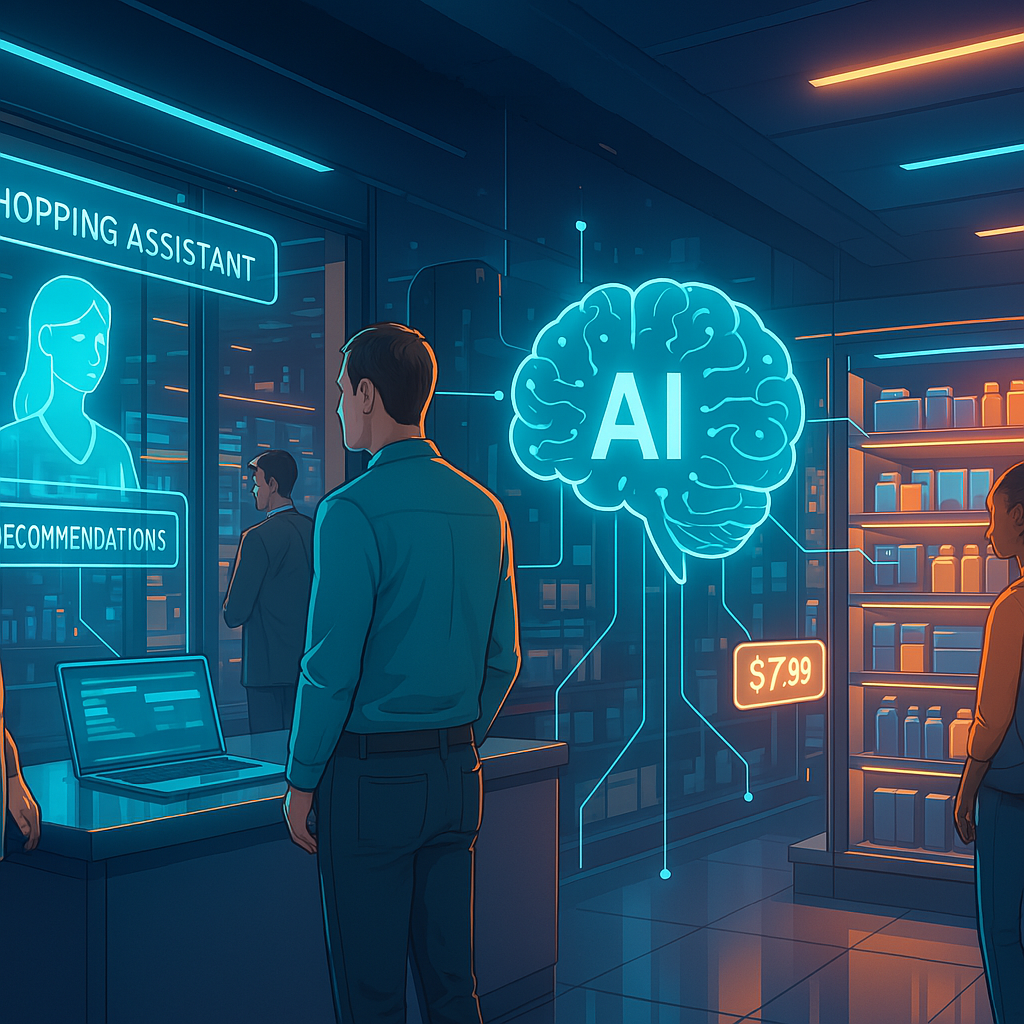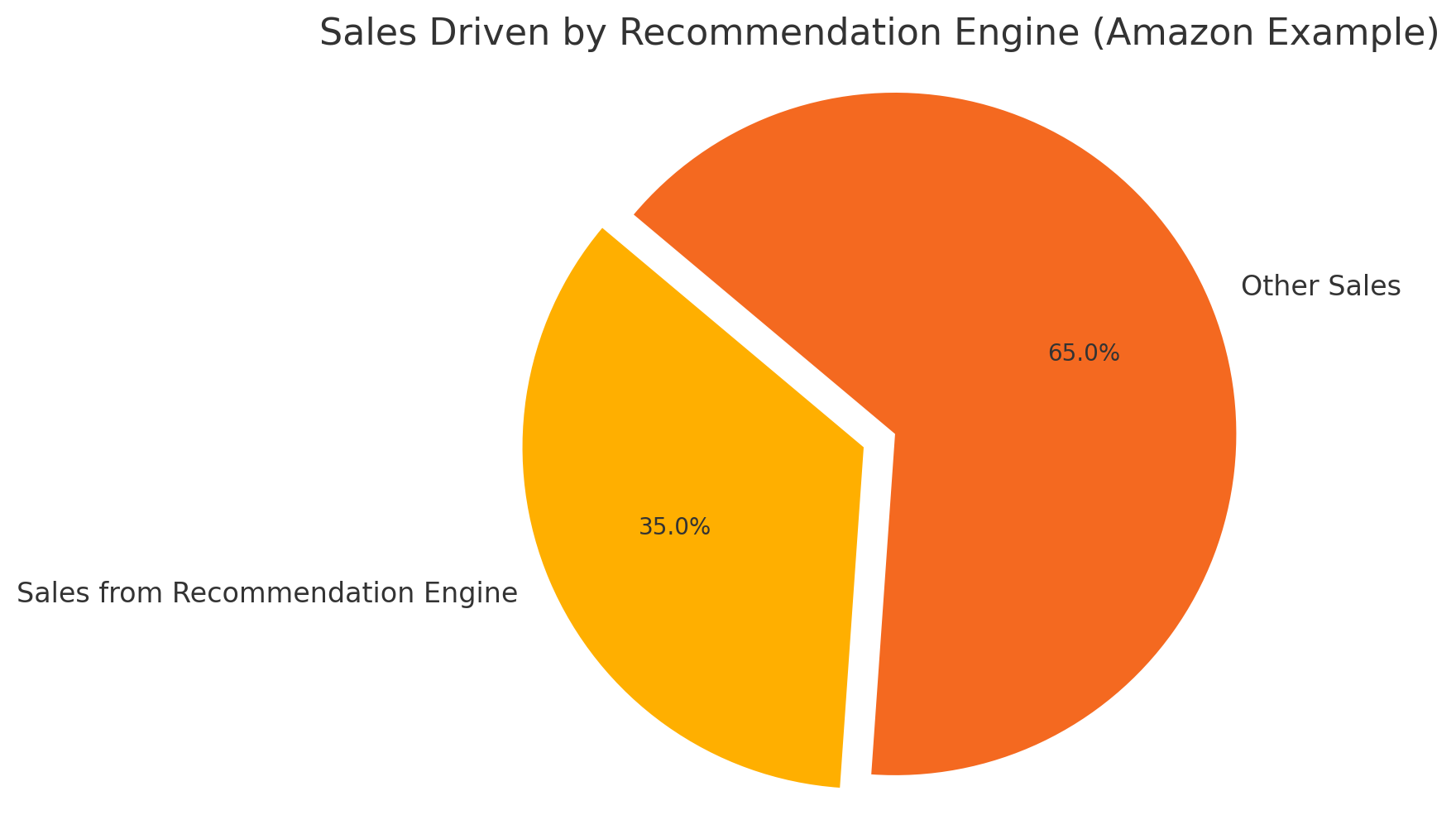AI in Retail: The Intelligent Revolution Reshaping How We Buy & Sell

In today's rapidly evolving retail landscape, artificial intelligence is no longer just a futuristic concept—it's the competitive edge separating industry leaders from those being left behind. Across North America, retailers are deploying sophisticated AI systems that are fundamentally transforming every aspect of the shopping experience, from supply chain management to the moment of purchase and beyond.
The Current State of AI in Retail
The retail sector is experiencing an unprecedented technological transformation. According to recent industry research, global spending on AI in retail is expected to reach $23.4 billion by 2027, up from approximately $5.9 billion in 2022. This dramatic increase reflects how AI has moved from experimental technology to essential business tool.
In Canada, where e-commerce adoption accelerated by nearly five years during the pandemic, retailers are increasingly turning to AI solutions to meet changing consumer expectations. Similarly, U.S. retailers facing intense competition and shrinking margins are leveraging AI to create operational efficiencies while enhancing customer experiences.
How AI Is Transforming the Customer Experience
Hyper-Personalization: Beyond Basic Recommendations
Today's AI-powered recommendation engines go far beyond the simple "customers who bought this also bought" algorithms of the early e-commerce era. Modern systems analyze hundreds of data points—including browsing history, purchase patterns, time spent viewing products, and even weather conditions in the customer's location—to create deeply personalized shopping experiences.
Canadian retail giant Loblaws has implemented AI-driven personalization through its PC Optimum program, which analyzes purchase history to offer individualized weekly deals. The system continuously learns from customer interactions, becoming more accurate with each transaction.
Amazon, the industry pacesetter, uses predictive analytics to anticipate customer needs—sometimes before customers themselves are aware of them. Their recommendation engine drives an estimated 35% of their total sales, demonstrating the remarkable effectiveness of AI-powered personalization.

Visual Search and Virtual Try-Ons
AI is also revolutionizing how customers discover and evaluate products. Visual search technology allows shoppers to upload images and find similar items, while virtual try-on solutions powered by augmented reality let customers visualize products in their own environments or on themselves.
Canadian e-commerce platform Shopify has invested heavily in these technologies, offering merchants AI-powered tools that allow customers to visualize furniture in their homes or try on glasses and makeup virtually. These innovations are proving particularly valuable for reducing return rates—a significant pain point for online retailers.
Conversational Commerce: AI Assistants and Chatbots
AI-powered conversational interfaces are becoming increasingly sophisticated, handling everything from basic customer service inquiries to complex product recommendations. These systems can now engage in natural-sounding conversations, understand context, and learn from interactions to improve over time.
Walmart's "Ask Sam" voice assistant helps employees quickly find products and answer customer questions, while their customer-facing chatbots handle routine inquiries, freeing human agents to address more complex issues. These AI assistants operate 24/7, providing immediate responses and significantly improving customer satisfaction while reducing operational costs.
Behind the Scenes: AI-Powered Retail Operations
Inventory Management and Demand Forecasting
Perhaps the most impactful application of AI in retail occurs behind the scenes. Advanced machine learning algorithms analyze historical sales data, seasonal trends, weather forecasts, social media sentiment, and even macroeconomic indicators to predict future demand with remarkable accuracy.
Canadian Tire's use of AI for inventory optimization has reduced stockouts by 40% while simultaneously decreasing excess inventory by 15%. Their system considers over 1,000 variables to make stocking decisions, significantly outperforming traditional forecasting methods.
Dynamic Pricing Strategies
AI has transformed pricing from a periodic strategic exercise to a dynamic, real-time process. Retailers now employ sophisticated algorithms that continuously adjust prices based on demand, competitor pricing, inventory levels, and even individual customer willingness to pay.
Amazon reportedly changes prices millions of times per day using AI algorithms that consider countless factors. While this level of price fluidity may seem extreme, even traditional retailers are adopting more modest versions of dynamic pricing, particularly for clearance items and during peak shopping periods.
Supply Chain Optimization
AI is revolutionizing retail supply chains through predictive maintenance, route optimization, and automated fulfillment. Machine learning algorithms identify potential disruptions before they occur, allowing retailers to proactively adjust their strategies.
Walmart Canada partnered with DLT Labs to implement a blockchain-enhanced, AI-powered supply chain management system that has dramatically improved efficiency. The system automatically reconciles delivery data, tracks shipments in real-time, and identifies optimization opportunities, resulting in an 83% reduction in dispute resolution time.
The Ethical Dimensions: Privacy Concerns and Responsible AI
The power of retail AI comes from data—enormous amounts of it. This raises significant privacy concerns for consumers and regulatory challenges for businesses.
The Privacy Paradox
Consumers face what researchers call the "privacy paradox"—they express concern about data collection while simultaneously valuing the personalized experiences that such data enables. A recent survey found that 73% of North American consumers worry about how retailers use their data, yet 68% appreciate personalized recommendations.
This tension is particularly evident in Canada, where privacy regulations are generally stricter than in the United States. Canadian retailers must navigate the Personal Information Protection and Electronic Documents Act (PIPEDA), which requires explicit consent for data collection and limits how information can be used.
Algorithmic Bias and Fairness
AI systems can inadvertently perpetuate or amplify existing biases. For example, if historical purchasing data reflects societal inequalities, recommendation algorithms may reinforce these patterns rather than providing truly personalized suggestions.
Progressive retailers are addressing this challenge by implementing fairness metrics and diverse training data. Levi Strauss & Co. has developed algorithms that specifically check for bias in their recommendation systems, ensuring that suggestions are based on genuine preferences rather than demographic assumptions.
Implementation Strategies for Businesses
Starting Small: The Incremental Approach
For mid-sized retailers without the resources of industry giants, implementing AI can seem daunting. Experts recommend starting with focused applications that address specific business challenges.
Montreal-based Frank And Oak began their AI journey by implementing a basic recommendation engine for their online store. After seeing positive results, they gradually expanded to include inventory forecasting and eventually customer service automation. This incremental approach allowed them to build AI capabilities while demonstrating ROI at each stage.
Build vs. Buy: Strategic Considerations
Retailers must decide whether to develop proprietary AI solutions or leverage existing platforms. While custom solutions offer greater control and potential competitive advantage, they require significant technical expertise and ongoing investment.
Many Canadian retailers are finding success with a hybrid approach—using established platforms for foundational capabilities while developing proprietary algorithms for areas of strategic differentiation. Toronto-based Indigo Books & Music uses standard recommendation engines but has developed custom inventory management AI tailored to the unique challenges of book retailing.
Change Management: The Human Element
The most sophisticated AI implementation will fail without appropriate change management. Retail employees often fear automation will threaten their jobs, so successful AI adoption requires clear communication about how technology will augment rather than replace human workers.
Best Buy's implementation of AI-powered inventory management included comprehensive training programs that helped store associates understand how the technology would make their jobs easier by reducing manual inventory checks and improving product availability for customers.
The Future of AI in Retail
"The future of retail isn't just digital—it's intelligent. AI is no longer a tool; it's the new foundation for how we understand, serve, and connect with customers."
Ambient Intelligence: The Invisible Interface
The future of retail AI lies in ambient intelligence—technology that fades into the background while anticipating and meeting customer needs. Amazon's Just Walk Out technology, which eliminates the traditional checkout process, represents an early example of this trend.
Canadian startup Focal Systems is pioneering "shelf intelligence" systems that use cameras and AI to automatically detect stockouts and update inventory systems. These technologies create seamless experiences where the technology itself becomes invisible to the customer.
Predictive Commerce: From Reactive to Proactive Retail
The ultimate evolution of retail AI is predictive commerce—systems that not only respond to customer behavior but anticipate future needs with such accuracy that purchasing becomes nearly automatic.
Subscription services like Amazon's "Subscribe & Save" represent early steps toward predictive commerce, but future systems will be far more sophisticated. Imagine refrigerators that order groceries based on consumption patterns and dietary preferences, or clothing retailers that prepare seasonal wardrobes based on personal style, upcoming calendar events, and predicted weather.
Conclusion: Embracing the AI Retail Revolution
The retail landscape is being fundamentally reshaped by artificial intelligence. For businesses, the message is clear: AI adoption is no longer optional but essential for survival and growth in an increasingly competitive market.
Canadian and U.S. retailers that thoughtfully implement AI solutions—balancing technological capability with human insight, and efficiency with ethical considerations—will be best positioned to thrive in this new era. The most successful will be those that use AI not simply to optimize existing processes but to reimagine the very nature of the retail experience.
For consumers, AI-powered retail offers unprecedented convenience and personalization. The brands that will earn lasting loyalty will be those that use these powerful technologies transparently and respectfully, creating value while honoring the fundamental human desires for privacy, autonomy, and genuine connection.
The AI revolution in retail is not coming—it's already here. The only question is who will lead and who will follow.
